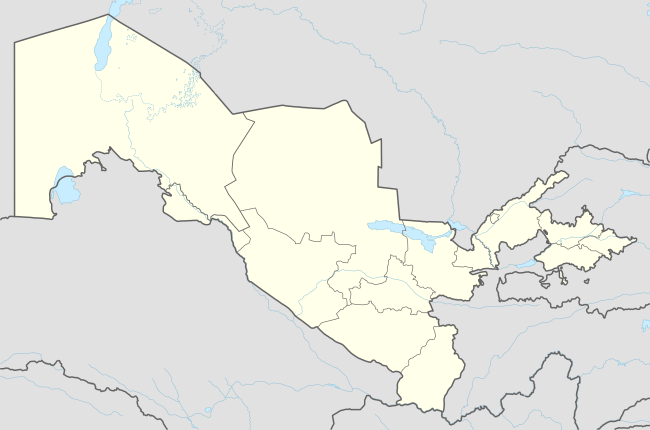Urgench
| Urgench Urganch / گرگانج | |
|---|---|
 | |
 Urgench Location in Uzbekistan | |
| Coordinates: 41°33′N 60°38′E / 41.550°N 60.633°E | |
| Country |
|
| Region | Khorezm Region |
| Elevation | 91 m (299 ft) |
| Population (2004) | |
| • Total | 175,900 |
Urgench (Uzbek: Urganch/Урганч, ئۇرگەنج; Persian: گرگانج, Gorgånch/Gorgānč/Gorgânc) is a city in western Uzbekistan. The population of Urgench on April 24, 2014 was approximately 150,110, an increase from 139,100 in 1999. It is the capital of the Khorezm Region, on the Amu Darya River and the Shavat canal. The city is situated 450 km west of Bukhara across the Kyzylkum Desert. It is located at a latitude 41°32'60"N and a longitude of 60°37'60"E, at an altitude of 91 meters.
The history of the city goes back to the second half of the 19th century. The city should not be confused with the similarly-named city of Konya-Urgench (also known as "Old Urgench" or "Gurgench") in Turkmenistan. The city of Old Urgench was left after the Amu Darya river changed its course in the 16th century, leaving the old town high and dry and without water. New Urgench was founded by Russians in the second half of the 19th century at the site of a little trade station of the Khanate of Khiva.
Modern Urgench is a Soviet-style city with cotton motifs adorning many objects, from street lights to apartment houses. Of note is a monument to the twenty Komsomol members killed by Tekke basmachi on the banks of the Syr Darya in 1922, and a large statue to Muhammad al-Khwarizmi, the 9th century local mathematician who revolutionised algebra, outside the Hotel Urgench. A flat, drab place, Urgench is the main gateway for tourists to Khiva 35 kilometres to the southeast, whose old city, known as Itchan Kala, is a UNESCO World Heritage Site.
See also
| Wikimedia Commons has media related to Urgench. |
Coordinates: 41°33′N 60°38′E / 41.550°N 60.633°E